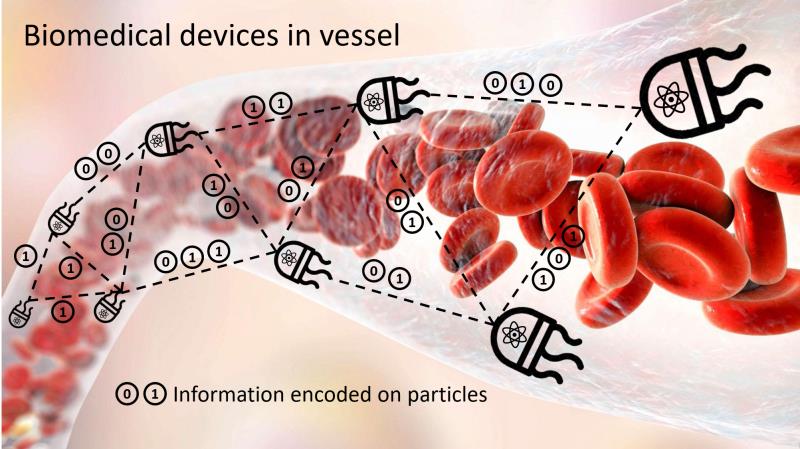The Internet of Bio-Nano Things (IoBNT) promises to revolutionize medicine and healthcare. It consists of biological computing machines such as micro and nano-implants that can collect sensor information inside the human body and coordinate monitoring and treatment. The past decade has witnessed huge leaps towards enabling this vision. Advances in bio-engineering, synthetic biology, and nanotechnology have led to biosensors that collect and process data, nano-scale Lab-on-a-Chip that runs medical tests inside the body, the use of bacteria to design biological nano-machines that can detect pathogens, and all the way to nano-robots that can swim through the bloodstream to perform targeted drug delivery and treatment.
A key component of IoBNT is networking the biological computing machines such as nano-robots or bacterial nano-machines. Networking enables these end devices to become a part of an autonomous system: for example, deliver data to the Labs-On-Chip or communicate with nano-robots that could be injected into the human body. However, due to the vast variability in the type of end devices used, a modular approach to networking protocols and algorithms is not feasible. In other words, network protocols that are designed specifically for the end devices used in the physical layer are needed to deliver the promise of IoBNT. While large implants such as pacemakers, defibrillators, and pill cams make use of traditional wireless communication, it cannot be translated to micro or nano-implants, nor to other biological computing machines. As a result, molecular communication (MC) has emerged as the most suitable paradigm for networking biological computing machines and bio implants, where chemical molecules are used to communicate information between devices. The core idea behind MC is to encode ”1” and ”0” bits by releasing molecular particles into the bloodstream. In its simplest form, one can encode a ”1” bit by releasing particles and a ”0” bit by releasing nothing, which is similar to ON-OFF-Keying in wireless networks. The small form factor and bio-compatibility of MC make it the most promising approach which led researchers to design bio-transceivers that can send and receive particles using synthetic cells or genetically engineered bacteria as well as biological circuits that use cells to emulate NAND and NOR logic gates.
Projects
Towards Practical and Scalable Molecular Networks [SIGCOMM’23]
Molecular networks have the potential to enable bio-implants and biological nano-machines to communicate inside the human body. Molecular networks send and receive data between nodes by releasing molecules into the bloodstream. In this work, we explore how we can scale molecular networks from a single transmitter single receiver paradigm to multiple transmitters that can concurrently (…)

Understanding and Embracing the Complexities of the Molecular Communication Channel in Liquids [MobiCom’20]
Abstract:Molecular communication has recently gained a lot of interest due to its potential to enable micro-implants to communicate by releasing molecules into the bloodstream. In this paper, we aim to explore the molecular communication channel through theoretical and empirical modeling in order to achieve a better understanding of its characteristics, which tend to be more (…)